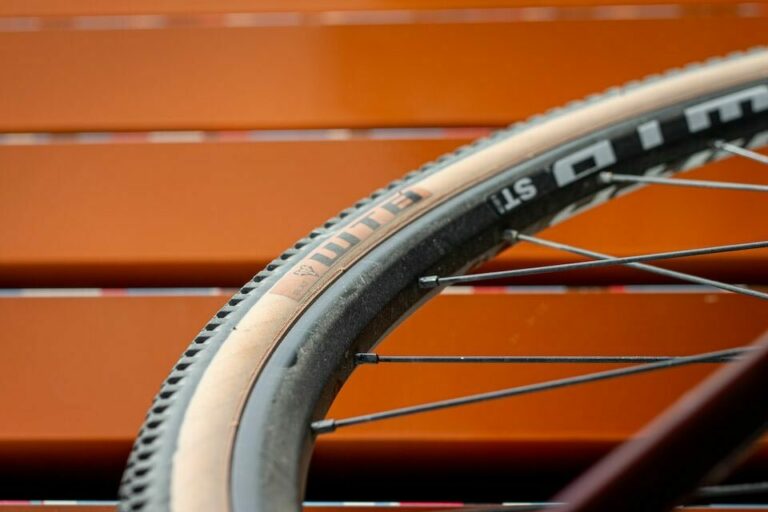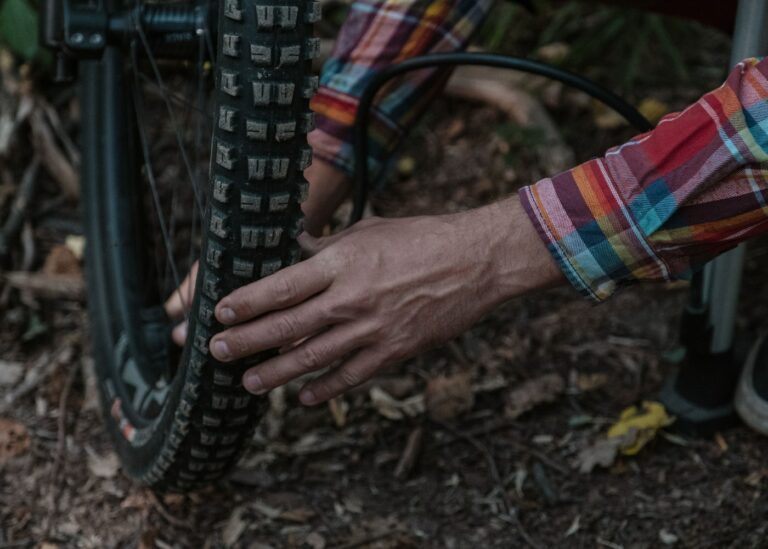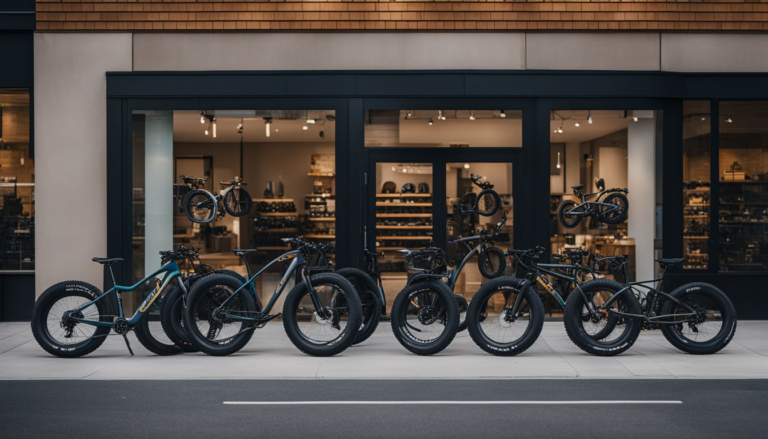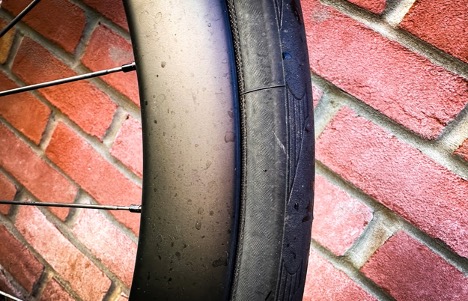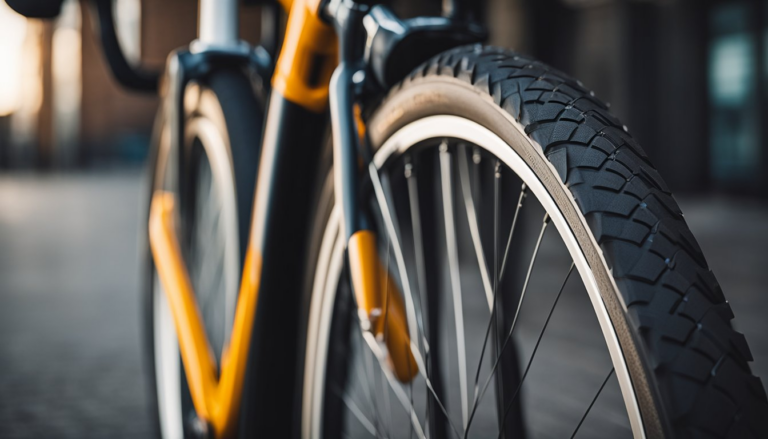Guide to Road Bike Tires: Everything You Need to Know
Understanding the different parts of a tire, such as the bead, sidewall, casing, and tread, can help cyclists make better-informed decisions when selecting a tire.
This guide covers the types of road bike tires available, such as clincher, tubular, and tubeless, and their respective advantages and disadvantages.
Other important topics we’ve covered in this guide include tire size and width, tread patterns, tire pressure, materials and technology, durability and lifespan, aerodynamics and rolling resistance, maintenance and care, puncture repair and prevention, and brands and models.
Key Takeaways
- Choosing the right tire is significant for performance, safety, and comfort in road cycling.
- Understanding the anatomy of a tire and the different types available can help cyclists make informed decisions.
- Proper maintenance and care, including checking tire pressure and preventing punctures, can extend the life of a tire and improve cycling performance.
The Allure and Challenge of Road Cycling

Road cycling is a thrilling and challenging sport that attracts enthusiasts from around the world. The allure of the open road, the wind in your face, and the freedom to explore new places is what draws many people to road cycling. It is also an excellent way to stay fit, healthy, and active.
One of the most important components of a road bike is the tires. Road bike tires are designed to be lightweight, durable, and provide excellent traction on the road.
They are typically narrower than other types of bike tires, which reduces rolling resistance and increases speed. Road bike tires come in a range of sizes, including 700c, 650c, and 26 inches.
Choosing the right road bike tire is essential for a smooth and safe ride. The best road bike tires offer a balance of performance, durability, and comfort. Some of the top road bike tire brands include Continental, Michelin, and Vittoria.
When selecting road bike tires, there are a few factors to consider, including tire width, tread pattern, and tire pressure. Narrower tires are better for speed and performance, while wider tires provide more comfort and stability.
Tread patterns vary depending on the type of riding you will be doing. Smooth tread patterns are ideal for racing, while more aggressive tread patterns are better for off-road cycling.
Maintaining proper tire pressure is suggested for a safer and comfortable ride. Overinflated tires can cause a harsh ride and reduce traction, while underinflated tires can lead to pinch flats and poor handling. The recommended tire pressure will vary depending on the tire size and rider weight.
Road cycling is an excellent way to stay fit, healthy, and active. Choosing the right road bike tire is essential for a smooth and safe ride. By considering factors such as tire width, tread pattern, and tire pressure, riders can select the best road bike tire for their needs.
The Critical Role of Equipment, Especially Tires, in Performance
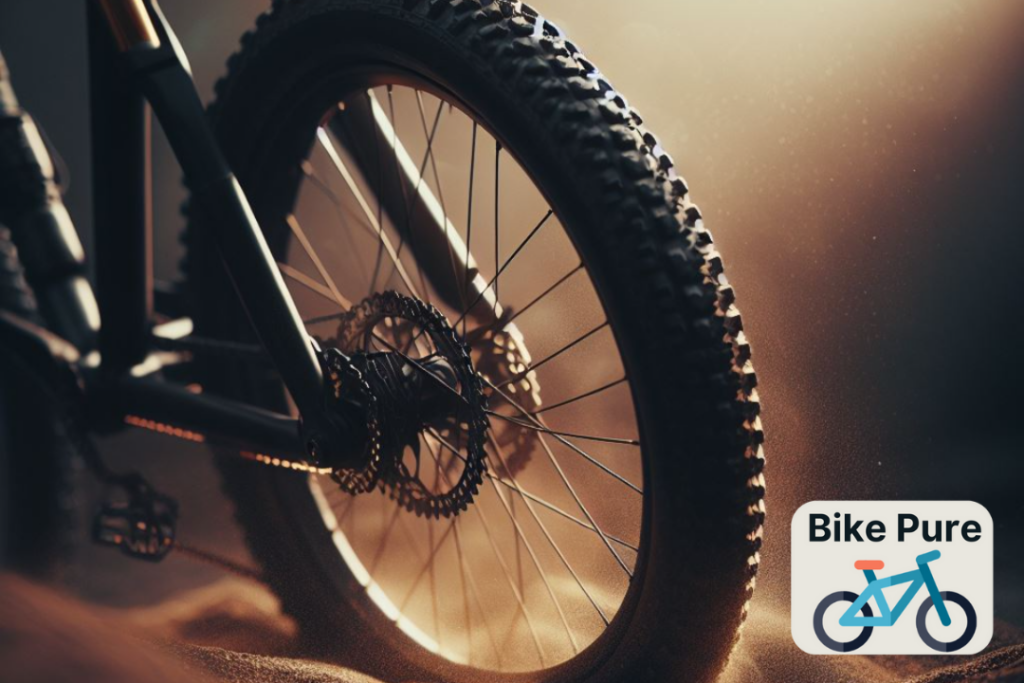
When it comes to road cycling, the right equipment can make all the difference. Among the most important components of a road bike are the tires. The right tires can provide better grip, smoother rides, and faster speeds. In contrast, the wrong tires can make for a bumpy, slow, or even dangerous ride.
One of the key factors to consider when choosing bike tires is the type of riding you plan to do. For example, if you primarily ride on smooth roads, slick tires may be the best option. However, if you often ride on rough or wet terrain, tires with more tread may be necessary for better grip and control.
Road bike wheels are another important component that can have a significant impact on performance. The best road bike wheels are lightweight, durable, and provide good aerodynamics. Upgrading to high-quality wheels can reduce rolling resistance, resulting in faster speeds and easier climbs.
When considering upgrades to road bike equipment, always keep in mind that the cost of the upgrade should be proportional to the benefits gained. While high-end equipment can provide better performance, it may not be necessary for all riders. It’s best to assess your own needs and goals before making any significant investments in equipment.
The right equipment, especially tires and wheels, can play a significant role in the performance of a road bike. By choosing the appropriate equipment for your needs and goals, you can enjoy a smoother, faster, and safer ride.
Anatomy of a Road Bike Tire
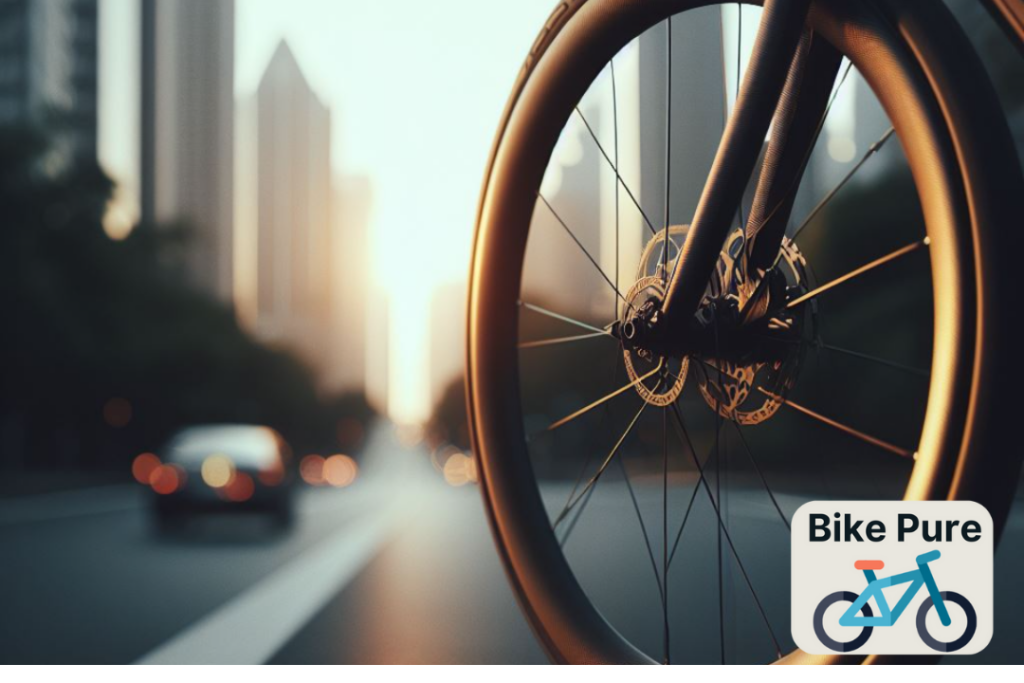
A road bike tire is a complex assembly of various components that work together to provide a smooth, efficient, and safe ride. Understanding the different parts of a road bike tire can help riders make informed decisions when choosing the right tire for their needs.
Understanding the Tread: Purpose and Variations
The tread of a road bike tire is the part of the tire that comes into contact with the road surface. The purpose of the tread is to provide traction and grip, especially in wet or slippery conditions.
Road bike tires typically come in two tread variations: slick and textured. Slicks have a smooth, uninterrupted surface that maximizes contact with the road, while textured tires have grooves or patterns that help channel water away from the tire and improve grip.
Sidewall Functionality and Materials
The sidewall of a road bike tire is the area between the tread and the bead, and it plays an important role in protecting the tire from damage. Sidewalls can be made from a variety of materials, including nylon, Kevlar, and cotton. Nylon is the most common material used in road bike tire sidewalls due to its durability and strength.
Bead: The Importance of a Secure Fit
The bead of a road bike tire is the part of the tire that fits snugly onto the rim of the wheel. A secure fit is essential for ensuring that the tire stays in place and does not slip or shift during use.
The bead can be made from a variety of materials, including wire, Kevlar, and carbon fiber. Carbon fiber beads are the lightest and most expensive, while wire beads are the heaviest and most affordable.
Casing: Balancing Durability and Flexibility
The casing of a road bike tire is the layer of material that sits between the tread and the bead. The casing provides the tire with its shape and structure, and it is essential in determining the tire’s durability and flexibility. Casing materials can include nylon, cotton, and silk, with higher thread counts indicating a more durable and flexible tire.
Compound: Grip and Longevity
The compound of a road bike tire refers to the type of rubber used in the tread and sidewalls. Different rubber compounds can be used to optimize the tire’s grip, longevity, and rolling resistance.
Some tires use a single compound throughout the tire, while others use multiple compounds to balance grip and durability. Some tires also incorporate advanced materials such as graphene to further enhance their performance.
A road bike tire is a complex assembly of various components that work together to provide a smooth, efficient, and safe ride. Understanding the different parts of a road bike tire can help riders make informed decisions when choosing the right tire for their needs.
Types of Road Bike Tires
When it comes to road bike tires, there are three main types to choose from: clincher, tubeless, and tubular. Each type has its own advantages and disadvantages, and the choice ultimately depends on the rider’s preference and riding style.
| Tire Type | Description | Pros | Cons |
| Clincher | Tire with a separate inner tube | Easy to install/repair, widely available | More prone to punctures |
| Tubeless | Seals against the rim without an inner tube | Lower rolling resistance, better puncture resistance | Can be difficult to install, requires compatible rim |
| Tubular | Sewn around an inner tube and glued to the rim | Low rolling resistance, superior handling | Difficult to install/repair, more expensive |
Clincher Tires: The Standard Choice
Clincher tires are the most common type of road bike tire, a fact supported by research on the characterization and modeling of various sized mountain bike tires. They consist of a tire with a separate inner tube that holds the air. Clinchers are easy to install and repair, and they are widely available in a variety of sizes and tread patterns. They are also generally less expensive than tubeless and tubular tires.
One of the downsides of clincher tires is that they are more prone to punctures and pinch flats. They also require higher tire pressure compared to tubeless tires to prevent pinch flats. However, with proper maintenance and care, clincher tires can provide a reliable and comfortable ride for most road cyclists.
Tubeless Tires: The Modern Revolution
Tubeless tires are gaining popularity among road cyclists due to their lower rolling resistance and improved puncture resistance compared to clincher tires. Tubeless tires are similar to clinchers, but they do not have an inner tube. Instead, the tire itself seals against the rim to hold the air.
Tubeless tires require a compatible rim and a special sealant to prevent air from escaping through the rim. They also require a lower tire pressure compared to clinchers, which can provide a more comfortable ride. However, tubeless tires can be more difficult to install and repair compared to clinchers, and they are generally more expensive.
Tubular Tires: The Professional’s Selection
Tubular tires are the choice of professional road cyclists due to their low rolling resistance and superior handling. Tubular tires consist of a tire that is sewn around an inner tube, which is then glued onto a special rim.
Tubular tires provide a smooth ride and excellent cornering performance, making them ideal for racing. One of the downsides of tubular tires is that they are difficult to install and repair, and they require a special rim and glue.
They are also generally more expensive and less widely available compared to clincher and tubeless tires. Tubular tires are a good choice for serious road cyclists who are willing to invest in the time and effort required to maintain them.
The choice of road bike tire ultimately depends on the rider’s preference and riding style. Clincher tires are the most common and widely available, while tubeless tires offer improved performance and puncture resistance.
Tubular tires are the choice of professionals, but they require more maintenance and are more expensive. Regardless of the type of tire chosen, proper maintenance and care are essential for a safe and comfortable ride.
Tire Size and Width
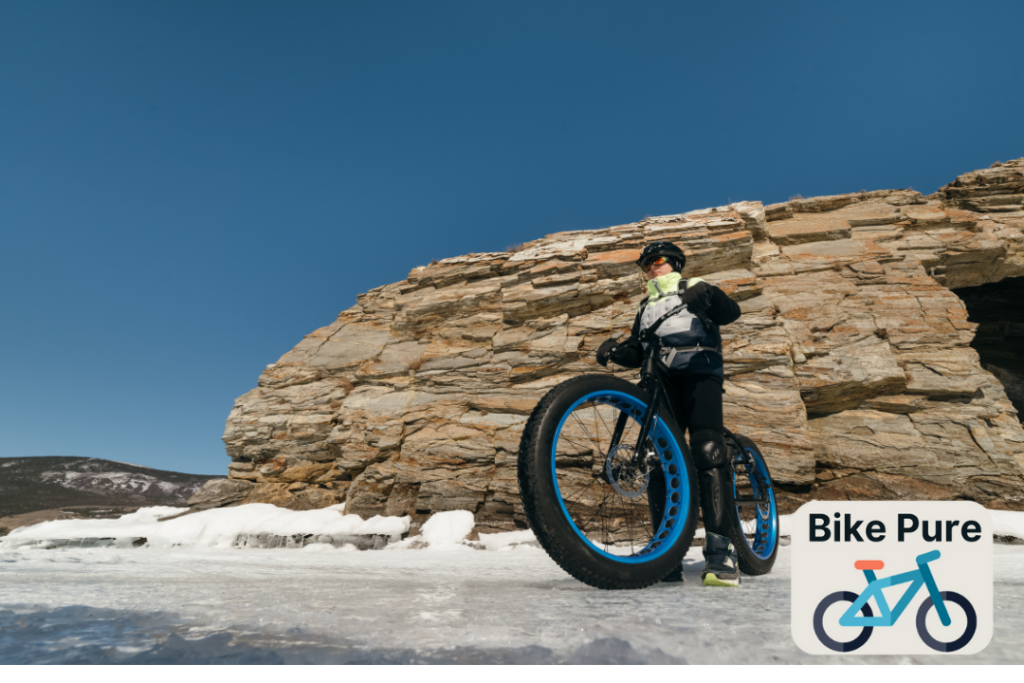
When it comes to road bike tires, there are two main factors to consider: tire size and width. These two factors play an important role in determining the speed and comfort of your ride. In this section, we will decode the tire size numbers and explore the width debate between narrow and wide tires.
Decoding Tire Size: What the Numbers Mean
Bike tire size is usually represented by a series of numbers on the sidewall of the tire. For example, a common road bike tire size is 700x25c. The first number, 700, represents the wheel size in millimeters. The second number, 25, is the tire width in millimeters. The “c” at the end indicates that the tire is designed for a clincher rim.
Note that tire sizes can vary slightly between manufacturers and models. What’s more, wider tires may have a larger diameter than narrower tires, even if they have the same first number. This can affect the contact patch, or the area of the tire that comes into contact with the ground, and therefore the ride quality.
The Width Debate: Narrow vs. Wide for Speed and Comfort
The width of your road bike tires can have a significant impact on both speed and comfort. Narrow tires, typically 23-25mm, are often favored by competitive cyclists for their low rolling resistance and aerodynamic profile. However, they can be less comfortable on rough roads and may not provide as much traction in wet conditions.
Wider tires, on the other hand, are becoming increasingly popular for their improved comfort and ability to handle a variety of road conditions.
Tires in the 28-32mm range can provide a smoother ride and better traction, especially on rough or gravel roads. However, they may be slightly slower than narrow tires due to their increased weight and rolling resistance.
When choosing the width of your road bike tires, it’s necessary to consider your riding style and the conditions you’ll be riding in. If you’re primarily a competitive cyclist and ride on smooth roads, narrow tires may be the best choice for you.
However, if you’re looking for a more comfortable ride or plan to tackle rougher terrain, wider tires may be the way to go. It’s best to ensure that your tire width is compatible with your rim width to ensure optimal performance.
Tire Tread and Patterns
When it comes to road bike tires, the tread and pattern of the tire can have a significant impact on the performance of the bike. In general, road bike tires have a slick tread pattern, which means they have minimal to no tread. This design provides the lowest rolling resistance and the best grip on smooth surfaces.
The Minimalist Approach to Road Tire Tread
Road bike tires are designed to be lightweight, fast, and efficient. The minimalist approach to road tire tread means that the tire has a smooth surface with no tread.
This design reduces rolling resistance and increases speed. The lack of tread also means that the tire has a larger contact patch, which improves grip on smooth surfaces.
Tread Patterns: When and Why They Matter
While slick tires are the norm for road bikes, there are situations where a tread pattern can be beneficial. Tread patterns are designed to improve traction on rough or uneven surfaces.
For example, a tire with a small amount of tread can provide better grip on wet roads. However, too much tread can increase rolling resistance and reduce speed.
When selecting a tire with a tread pattern, one should determine the conditions in which the bike will be used. For example, if the bike will be used primarily on smooth roads, a slick tire is the best choice. If the bike will be used on rough or uneven surfaces, a tire with a small amount of tread can improve traction.
Road bike tires are designed to be lightweight, fast, and efficient. Slick tires provide the lowest rolling resistance and the best grip on smooth surfaces.
Tread patterns can improve traction on rough or uneven surfaces, but too much tread can reduce speed. When selecting a tire with a tread pattern, one should check the conditions in which the bike will be used.
Tire Pressure
Maintaining the correct tire pressure is important for both performance and safety on a road bike. In this section, we’ll discuss how to find the ideal tire pressure for your bike and the impact of pressure on performance and ride quality.
Finding the Sweet Spot: Ideal Tire Pressure
The ideal tire pressure for a road bike varies depending on factors such as the rider’s weight, tire size, and riding conditions. Generally, the recommended tire pressure for road bikes falls between 80 and 120 pounds per square inch. However, it’s always good to consult the manufacturer’s recommendations for your specific bike and tire.
Underinflated tires can lead to poor performance, reduced speed, and increased rolling resistance, while overinflated tires can result in a harsh and uncomfortable ride. Also, incorrect tire pressure can affect handling and cornering ability, making it important to find the sweet spot for your bike.
To find the ideal tire pressure, start by checking the sidewall of your tire for the recommended pressure range. Then, experiment with different pressures until you find the one that provides the best combination of speed, comfort, and handling for your riding style and conditions.
The Impact of Pressure on Performance and Ride Quality
The impact of tire pressure on performance and ride quality is significant. Higher tire pressure can lead to faster speeds and better handling, but at the cost of comfort. Lower tire pressure can provide a more comfortable ride, but at the cost of speed and handling.
In addition to affecting performance and ride quality, tire pressure also plays a role in safety. Underinflated tires can increase the risk of pinch flats and blowouts, while overinflated tires can result in decreased traction and control.
Finding the ideal tire pressure for your road bike is essential for optimal performance, comfort, and safety. Take the time to experiment with different pressures and consult the manufacturer’s recommendations to find the sweet spot for your bike and riding style.
Materials and Technology
When it comes to road bike tires, the materials and technology used to play an essential role in determining their performance. In recent years, there have been significant advances in rubber compounds, puncture protection, and the weight factor that have greatly improved the quality of road bike tires.
Advances in Rubber Compounds
Rubber is the primary material used in making road bike tires. However, not all rubber compounds are created equal. Advances in rubber compounds have led to the development of materials like graphene and other high-performance rubbers that offer better grip, durability, and puncture resistance.
Innovations in Puncture Protection
Punctures are a common problem for road bike tires, and innovations in puncture protection have greatly improved their durability. Materials like Kevlar and Vectran are now used in tire construction to provide extra protection against punctures.
Furthermore, liners and sealants are also used to protect the tires from punctures. Liquid sealant is a popular choice for many riders as it can be added to the tire to provide an extra layer of protection against punctures.
The Weight Factor: Balancing Speed and Stability
One of the most important factors to consider when choosing road bike tires is weight. Lightweight tires are essential for speed, but they can also compromise stability.
Therefore, it is recommended to find a balance between the two. Advances in technology have led to the development of lightweight tires that also offer excellent handling and stability.
The materials and technology used in road bike tires play an essential function in their performance. Advances in rubber compounds, puncture protection, and weight have greatly improved the quality of road bike tires. Riders should carefully consider these factors when choosing their tires to ensure they get the best performance possible.
Tire Durability and Lifespan
Road bike tires are an essential part of any bike, and their durability and lifespan are important factors to consider when selecting the right tire for your bike. A tire’s durability is affected by various factors, including the type of rubber used, the tire’s construction, and the riding conditions.
Recognizing Tire Wear and Performance Impact
Worn-out tires can have a significant impact on a rider’s safety and performance. One should recognize the signs of tire wear and replace them before they become a safety hazard.
One of the most common indicators of tire wear is the presence of cracks or cuts on the tire’s surface. These can occur due to age, exposure to the elements, or improper inflation. Another sign of tire wear is a decrease in traction, which can affect a rider’s ability to grip the road and maneuver the bike.
Indicators for Tire Replacement
It is recommended to replace road bike tires every 1,000 to 2,000 miles, depending on the type of riding and the road conditions. However, there are several indicators that a tire needs to be replaced before reaching this mileage range.
One of the most important indicators is the presence of a flat spot on the tire’s surface, which can occur due to overuse or underinflation. Another indicator is the presence of bulges or blisters on the tire’s surface, which can indicate that the tire has been damaged and is no longer safe to ride on.
When selecting a new tire, it is needed to consider the value and durability of the tire. A high-quality tire may be more expensive, but it will last longer and provide better performance than a cheaper, lower-quality tire.
Choosing a tire with durable construction and wear indicators can help ensure that the tire lasts as long as possible and that the rider can recognize when it needs to be replaced.
Aerodynamics and Rolling Resistance
Road bike tires are an important component of a bike’s overall performance. One important aspect of tire performance is aerodynamics, which refers to how well the tire cuts through the air. Another important aspect is rolling resistance, which is the force required to keep the tire rolling.
Tires and Aerodynamic Efficiency
Aerodynamics is a key factor in road bike racing, where even small differences in speed can make a significant difference in the outcome of a race. Road bike wheels are designed to be as aerodynamic as possible, with the goal of reducing drag and increasing speed. The shape of the tire and the rim can have a significant impact on aerodynamics, as can the width of the tire.
For maximum aerodynamic efficiency, road bike tires should be narrow and have a smooth, round profile. This reduces the tire’s frontal area, which in turn reduces drag. The rim should also be designed to be as aerodynamic as possible, with a deep section that reduces turbulence and increases speed.
Understanding and Minimizing Rolling Resistance
Rolling resistance is another important factor in road bike tire performance. Rolling resistance is the force required to keep the tire rolling, and it is affected by a number of factors, including tire pressure, tire width, and tread pattern.
To minimize rolling resistance, road bike tires should be inflated to the correct pressure for the rider’s weight and riding conditions. A tire that is underinflated will have a higher rolling resistance, while a tire that is overinflated will be less comfortable and may be more prone to punctures.
Tire width is also an important factor in rolling resistance. Narrower tires generally have lower rolling resistance than wider tires, but wider tires can provide better traction and a more comfortable ride. Tread patterns can also affect rolling resistance. Tires with a smooth, slick tread pattern generally have lower rolling resistance than tires with a more aggressive tread pattern.
Maintenance and Care
Proper maintenance and care of road bike tires are essential for ensuring a safe and smooth ride. Here are some tips for keeping your tires in top condition.
Routine Tire Inspection and Upkeep
Regular inspection of road bike tires is recommended to ensure that they are in good condition. Here are some things to look out for during a routine tire inspection:
- Check for any cuts or punctures on the tire surface that could lead to a flat tire or blowout.
- Ensure that the tire pressure is within the recommended range, which is typically between 80 and 120 pounds per square inch (psi) for road bike tires.
- Look for any foreign objects, such as glass or stones, that may be embedded in the tire tread and remove them carefully.
- Check that the tire bead is seated properly on the rim to prevent the tire from coming off during a ride.
- Inspect the valve stem for any signs of damage or looseness and ensure that the valve cap is screwed on tightly.
Proper upkeep of road bike tires is also essential for regular inspections. Here are some best practices for tire upkeep:
- Avoid over-inflating or under-inflating the tires as this can lead to premature wear and tear.
- Rotate the tires periodically to ensure even wear on both tires.
- Replace worn-out tires promptly to avoid accidents or blowouts.
Best Practices for Tire Cleaning and Storage
Cleaning and storing road bike tires properly can help to extend their lifespan. Here are some best practices for tire cleaning and storage:
- Clean the tires regularly with a mild detergent and water to remove dirt and grime.
- Avoid using harsh chemicals or solvents that can damage the tire surface.
- Dry the tires thoroughly after cleaning to prevent moisture buildup, which can lead to corrosion.
- Store the tires in a cool, dry place away from direct sunlight and heat sources.
- Avoid storing the tires in a cramped or compressed position as this can lead to deformation or damage.
Road bike riders can ensure that their tires are in top condition for a safe and enjoyable ride by following these maintenance and care tips
Puncture Repair and Prevention
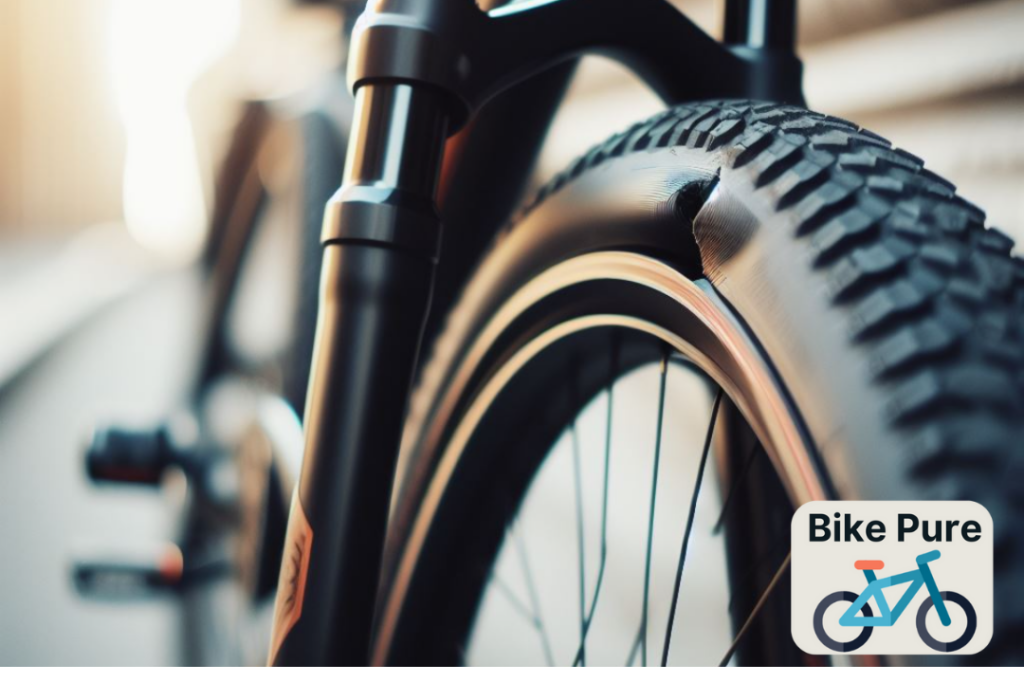
Road bike tires are susceptible to punctures and flats. However, there are several measures that riders can take to prevent punctures and repair them when they occur. In this section, we will discuss some of the best practices for puncture repair and prevention.
On-the-Road Fixes: Dealing with Flats
When a flat occurs while on the road, there are several steps that riders can take to fix the issue and continue riding. The first step is to remove the wheel and tire from the bike and inspect the tire for debris that may have caused the puncture. Once the debris is removed, the rider can use a patch kit to repair the puncture.
If a patch kit is not available, riders can also use a spare tube to replace the damaged one. Ensure that the new tube is the correct size for the tire and that it is inflated to the recommended pressure before continuing the ride.
Preventative Strategies: Liners, Sealants, and More
Preventative measures can also be taken to reduce the likelihood of punctures occurring in the first place. One option is to use puncture-resistant tires that are designed to withstand road debris and sharp objects.
Another option is to use tire liners, which are thin strips of material that are placed between the tire and tube to provide an additional layer of protection.
Liquid sealants are another popular option for preventing punctures. These sealants are inserted into the tire and tube and work by filling any punctures that occur while riding. This allows riders to continue riding without having to stop and repair the puncture.
Riders can also take steps to reduce the likelihood of punctures occurring. This includes avoiding road debris when possible, maintaining proper tire pressure, and inspecting tires regularly for signs of wear and tear.
Puncture repair and prevention is an important aspect of road bike maintenance. By following these best practices, riders can reduce the likelihood of punctures occurring and ensure that they are prepared to handle them when they do occur.
Brands and Models
When it comes to road bike tires, there are a variety of brands and models to choose from. Below we will survey some of the key road tire brands and provide model comparisons to help you make an informed decision.
Surveying the Market: Key Road Tire Brands
Some of the top manufacturers of road bike tires include Specialized, Continental, Schwalbe, and Vittoria. Each of these brands offers a range of models with different features and benefits.
Continental is known for their high-quality tires, with their Grand Prix 5000 and GP5000 models being among the most popular. These tires offer low rolling resistance and excellent grip, making them a top choice for serious cyclists.
Schwalbe is another well-respected brand in the cycling world, with their Pro One TLE and One tubeless models being highly regarded for their speed and durability.
Vittoria is a newer brand on the scene but has quickly gained popularity with their Corsa and Rubino Pro models. These tires offer a comfortable ride and excellent grip, making them a great choice for both racing and training.
Model Comparisons: What to Look for
When comparing models, there are a few key factors to consider. First, you’ll want to look at the tire size and width to ensure they are compatible with your bike. You’ll also want to consider the tread pattern and compound, as this can affect the tire’s grip and durability.
Another important factor to consider is the tire’s puncture resistance. Some models, such as the Continental Grand Prix 5000, offer enhanced puncture protection to help prevent flats on the road.
Ultimately, the best tire for you will depend on your individual needs and preferences. Consider factors such as your riding style, terrain, and budget when making your decision.
Environmental and Sustainability Issues
When it comes to road bike tires, there are a number of environmental and sustainability issues to consider. In recent years, there has been an increased focus on eco-friendly tire options and innovations, as well as responsible tire disposal and recycling.
Eco-Friendly Tire Options and Innovations
One of the main concerns with traditional road bike tires is their impact on the environment. However, there are now a number of eco-friendly tire options and innovations available that can help to reduce this impact.
| Practice | Description | Benefits |
| Using natural rubber tires | Tires made from renewable rubber | Biodegradable, reduces landfill waste |
| Using recycled rubber tires | Tires made from recycled materials | Reduces waste, conserves resources |
| Tire recycling programs | Programs to recycle old tires | Prevents pollution, tires repurposed for new products |
One such option is tires made from natural rubber, which is a renewable resource and recent research on evaluating the thermal model for bicycle tire internal temperature highlights the importance of sustainable design in tire manufacturing.
These tires are also biodegradable, which means they break down more easily and don’t contribute to landfill waste. Another option is tires made from recycled rubber, which can help to reduce waste and conserve resources.
There are also a number of innovations in tire design that can help to reduce environmental impact. For example, some tires now feature low rolling resistance, which means they require less energy to move and can help to reduce carbon emissions.
Tire Disposal and Recycling: Doing Your Part
Proper tire disposal and recycling is another important aspect of sustainability when it comes to road bike tires. When tires are not disposed of properly, they can contribute to pollution and other environmental problems.
One option for responsible tire disposal is to take old tires to a recycling facility. These facilities can often recycle the rubber and other materials in the tire, which can be used to create new products. Some bike shops and manufacturers also offer tire recycling programs, so be sure to check with them for options.
Another option is to repurpose old tires. For example, old tires can be used to create garden beds, playground surfaces, and even furniture. By finding creative ways to reuse old tires, you can help to reduce waste and conserve resources.
There are a number of ways to make road bike tires more eco-friendly and sustainable. By choosing eco-friendly materials and designs, and by properly disposing of and recycling old tires, cyclists can help to reduce their impact on the environment.
Frequently Asked Questions
What are the different types of road bike tires available?
There are three main types of road bike tires available: clincher, tubular, and tubeless. Clincher tires are the most common and are easy to install and repair. Tubular tires are lighter and have a smoother ride, but they are more difficult to install and repair. Tubeless tires are becoming increasingly popular as they offer lower rolling resistance and better puncture protection, but they require specific rims and sealant.
How do I choose the right size of road bike tire for my bike?
The size of the road bike tire you need depends on the size of your wheel and the clearance in your frame. The most common sizes for road bike tires are 700c and 650b. To determine the correct size, you need to measure the diameter of your wheel and the width of your tire. Make sure that the tire you choose is within the recommended size range for your rim and frame.
What are the benefits of using tubeless road bike tires?
Tubeless road bike tires offer several benefits over traditional clincher tires. They provide lower rolling resistance, which means you can ride faster with less effort. They also offer better puncture protection, as the sealant inside the tire fills any small holes or cuts. Tubeless tires also allow you to run lower tire pressures, which can improve comfort and traction.
Which are the fastest road bike tires available?
There are several fast road bike tires available on the market, but the fastest tire for you will depend on your specific needs. Some of the top performers include the Continental Grand Prix 5000, Schwalbe Pro One, and Vittoria Corsa Speed. These tires offer low rolling resistance and excellent grip, but they may sacrifice some durability.
What are the most comfortable road bike tires for long rides?
Comfort is an important consideration for long rides, and there are several road bike tires that offer excellent comfort. Tires with wider widths and lower pressures can provide a smoother ride, such as the Panaracer GravelKing SK, Schwalbe Marathon Supreme, and Continental Grand Prix 4-Season. These tires offer good puncture resistance and can handle a variety of road conditions while providing a comfortable ride.


